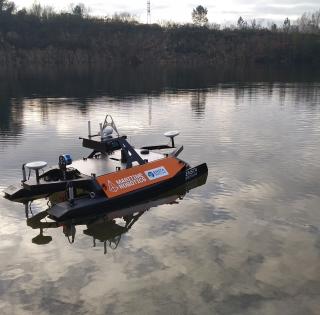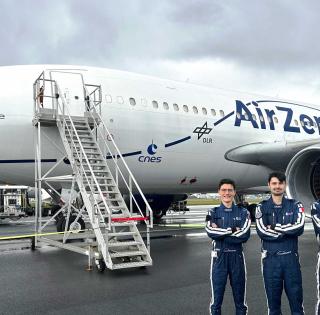
Why did you choose to specialize in hydrography and oceanography?
When I moved to Lorient in 2012, I had the opportunity to go sailing in middle school and high school, which inspired me to explore the wonders of the sea. So I decided to study hydrography, because it gave me the opportunity to develop my scientific knowledge of the oceans.
Did you get to go abroad while you were studying?
Yes - my first trip abroad was to Canada, where I spent three months for my second-year internship at a Coastal and Marine Mapping Center, processing hydrographic data. I’d always dreamed of traveling to Canada, so I was thrilled at the opportunity to explore North America and experience the inner workings of a foreign company. In my free time, I toured the Gaspé Peninsula and visited several cities, including Montreal, Toronto and Ottawa. The landscape is immense and the scenery magnificent! In my third year, I went to Norway, to the University of Oslo, to work on my end-of-study project.
What was your end-of-study internship about?
My internship focused on building a velocity model of a passive continental margin in the Arctic using seismic reflection and refraction data. Seismic reflection and refraction are geophysical methods used to determine the speed of propagation of acoustic waves through different geological layers.
So first I had to create a model based on other data from the same region, or based on geological and geophysical knowledge. Next, I identified the different seismic phases in the raw data from the Norwegian GoNorth 2022 campaign using various methods, such as filtering. I then updated the model using various algorithms. It takes several iterations to obtain a final velocity model that includes not only the speeds but also the depths of the various geological layers.
This model allows us to geologically characterize part of the Nansen Basin in the Arctic and, in the long term, contribute to our understanding of the effects of climate change. My end-of-study project allowed me to expand my knowledge of methodology using different types of specialized algorithms. It also helped me develop other skills, such as analyzing the state of the art and synthesizing and critiquing my findings.
What are your future career plans?
I’d like to work for an international company, on a fleet of marine geophysics and hydrography research vessels.
How would you sum up your training at ENSTA Bretagne?
The training program is very comprehensive and I really enjoyed the mix of theory and practice, such as the Guerlédan project, which gave us an insight into the field of research.
Given my academic background, I had to work hard to succeed, and it was worth it! I think it’s great that ENSTA Bretagne gives a chance to students who weren’t accepted on the basis of an entrance exam, and I’m really grateful for that. My two years at ENSTA Bretagne have given me the opportunity to meet some wonderful people, both students and professors!










